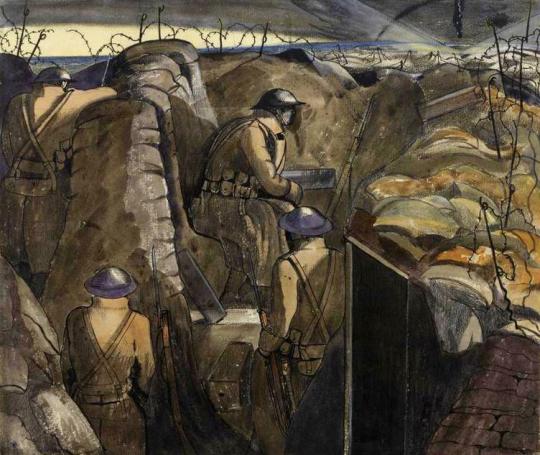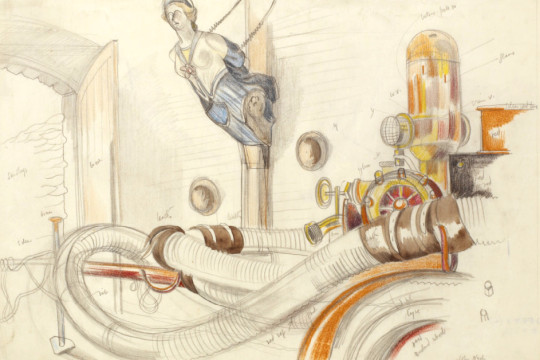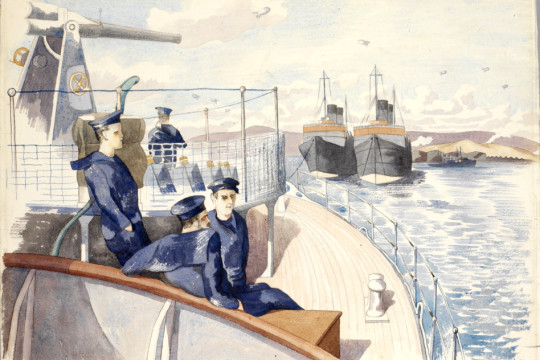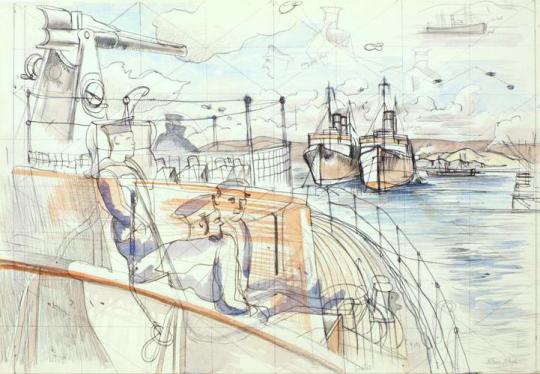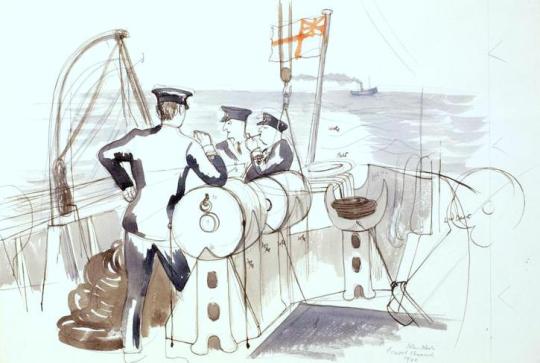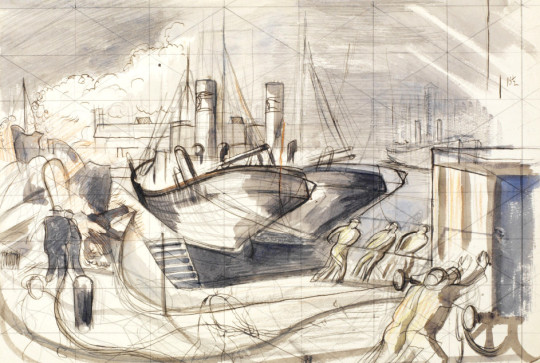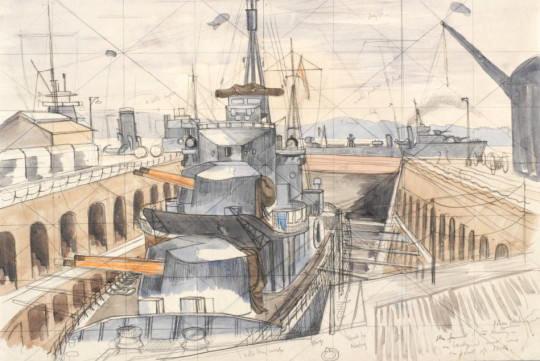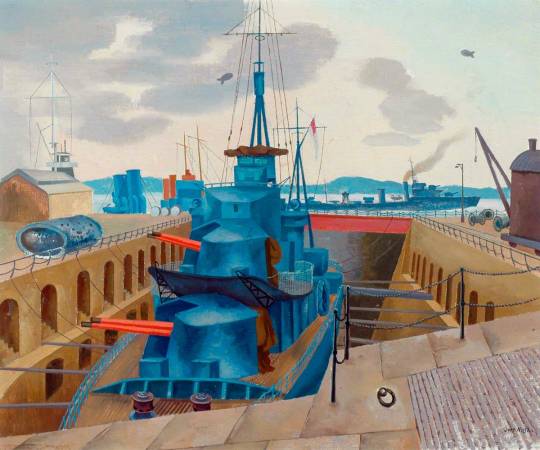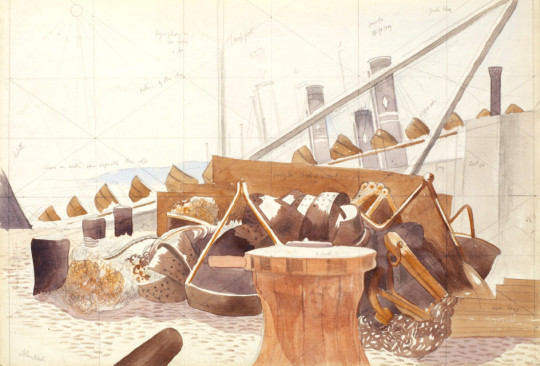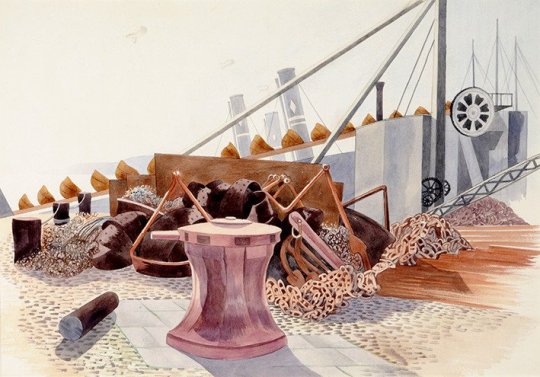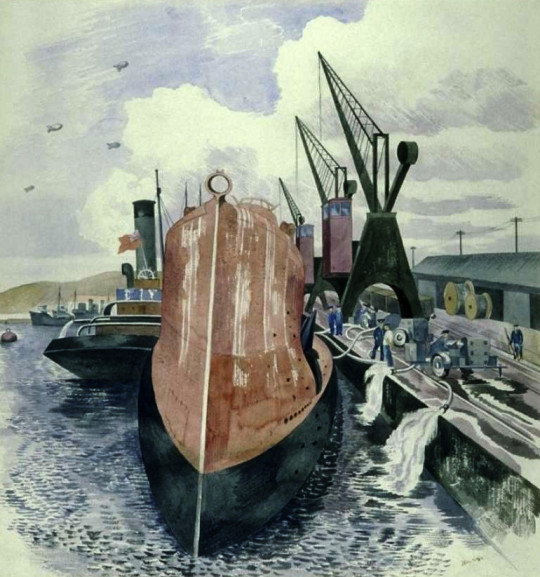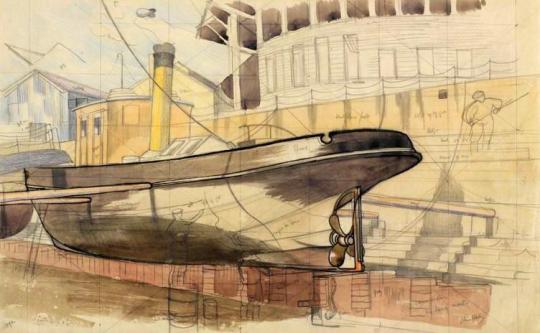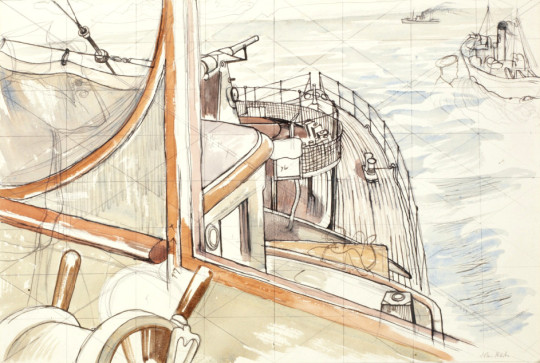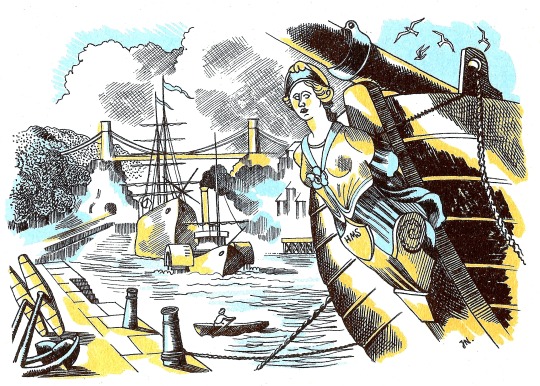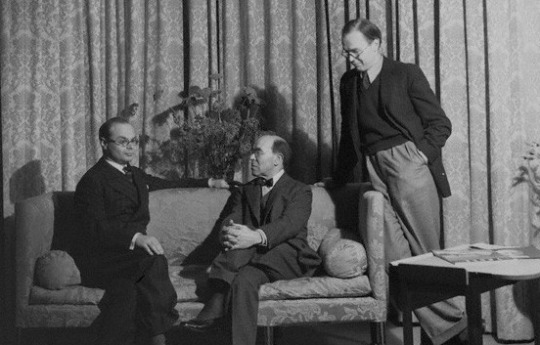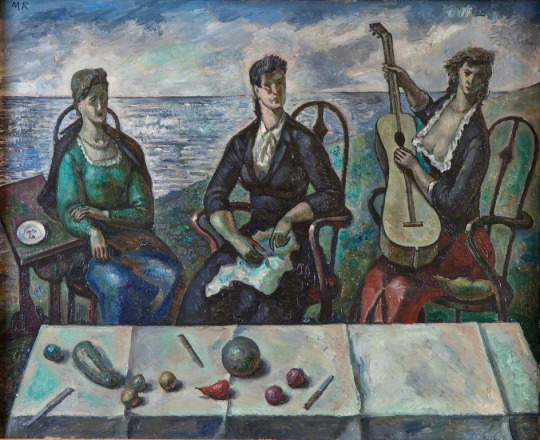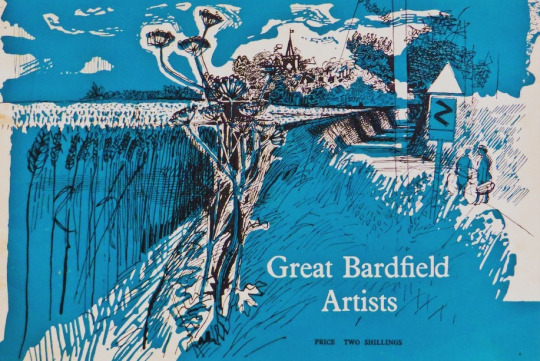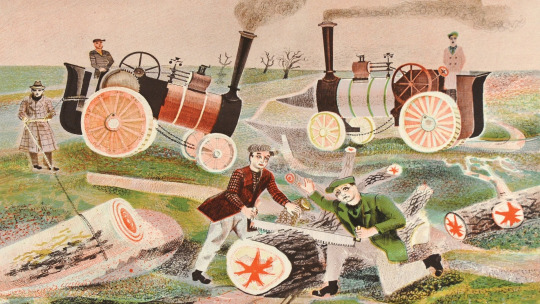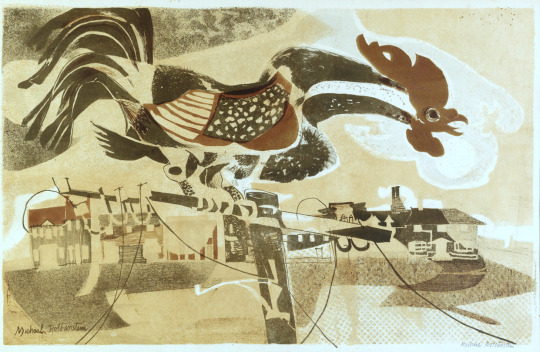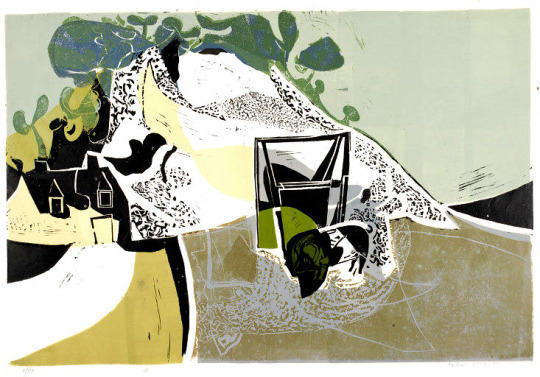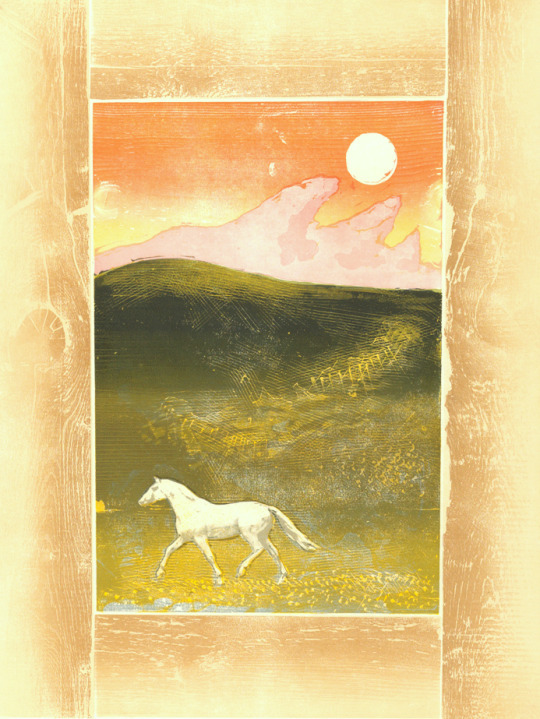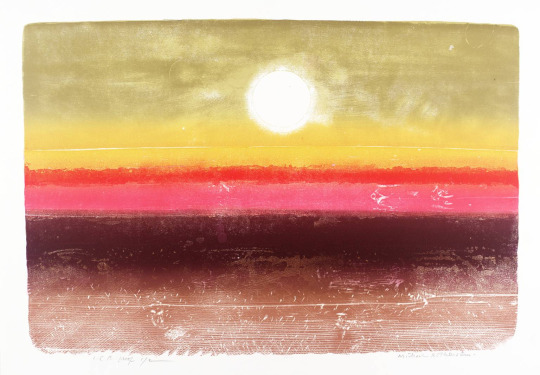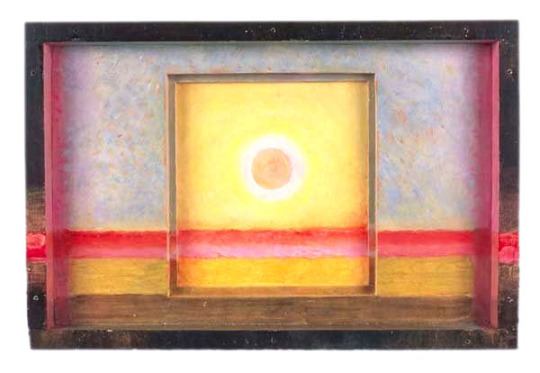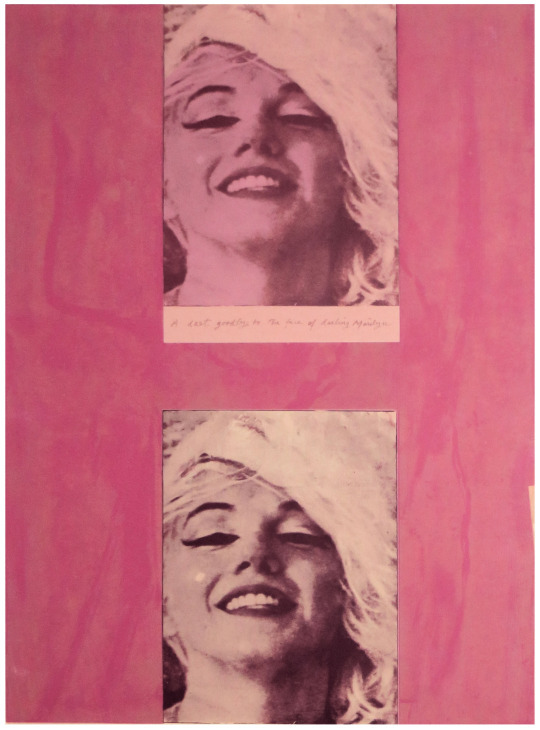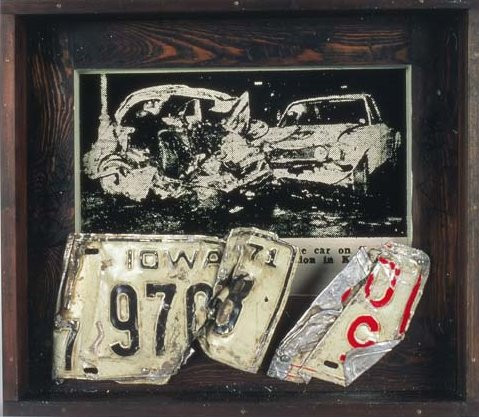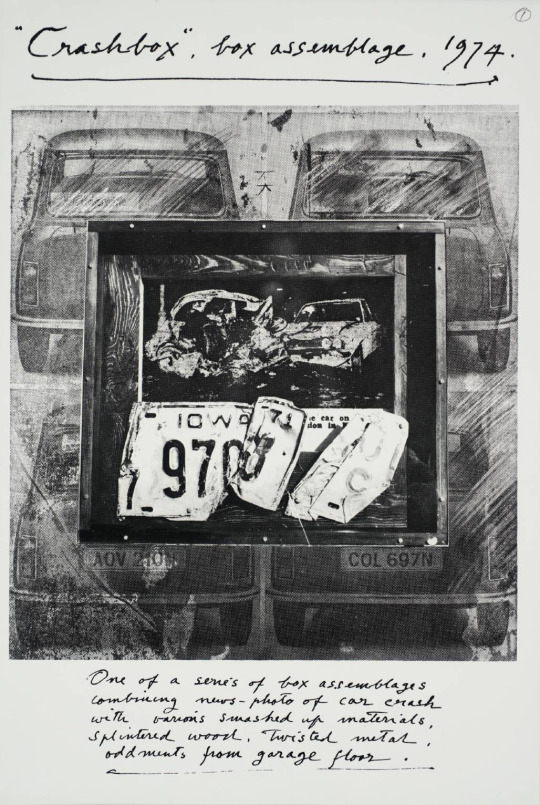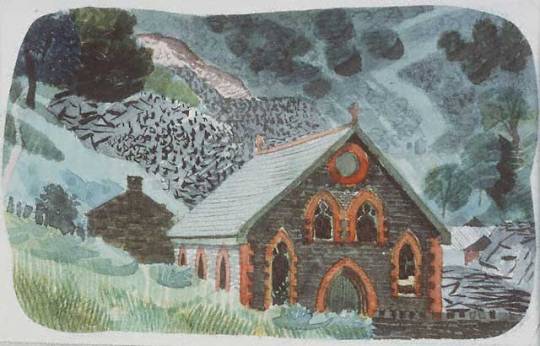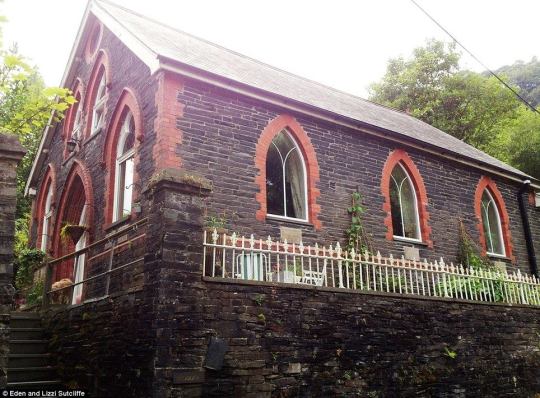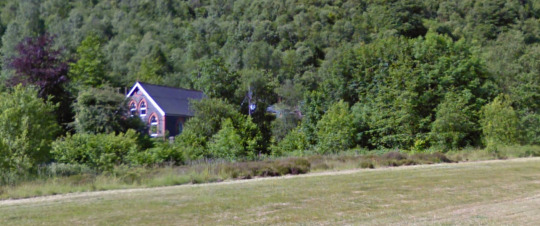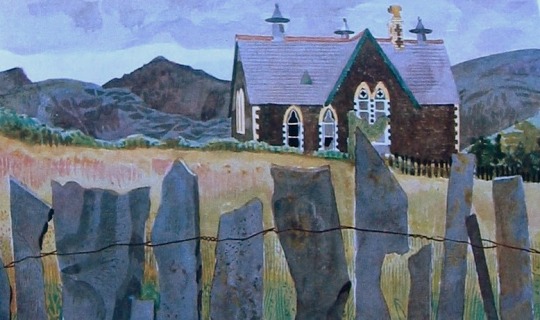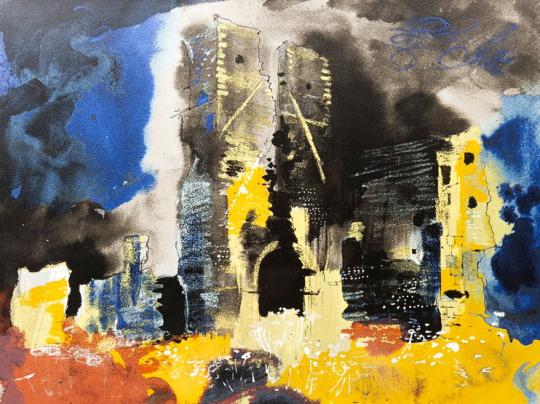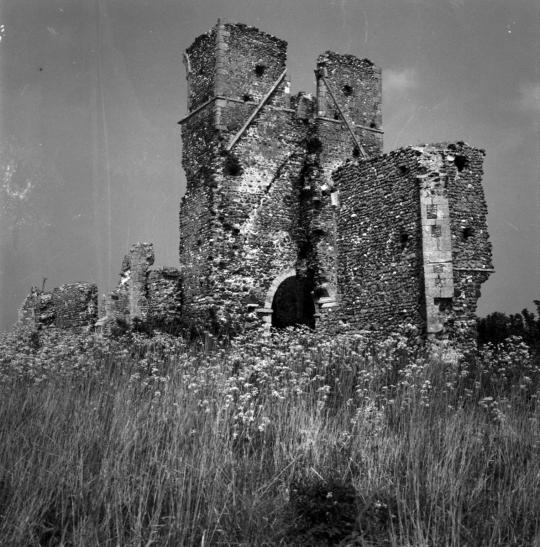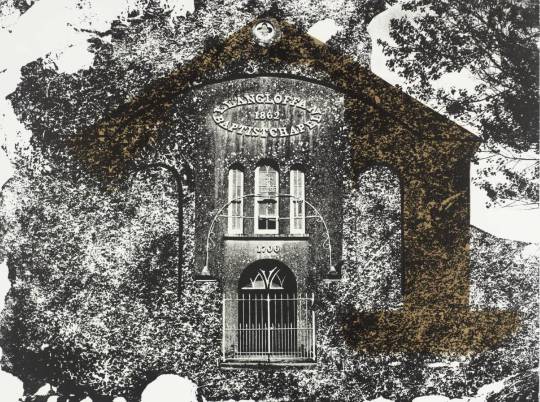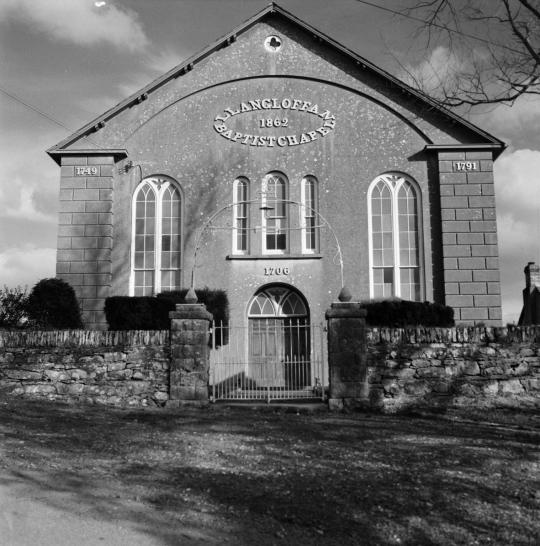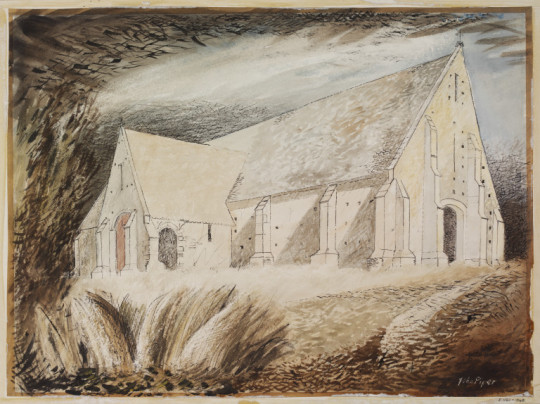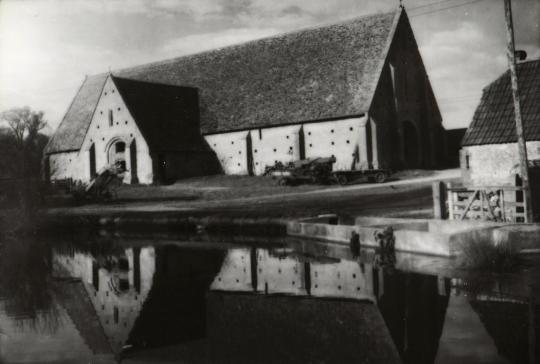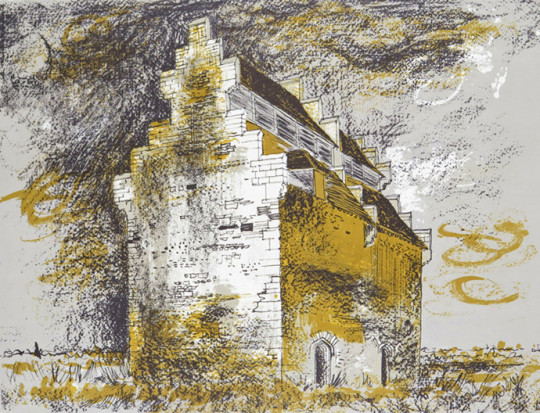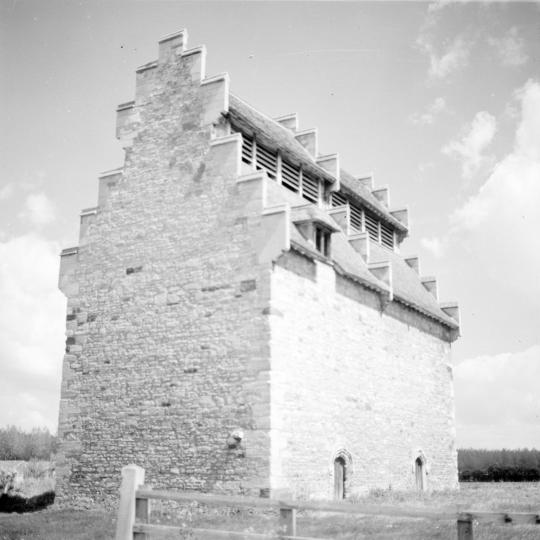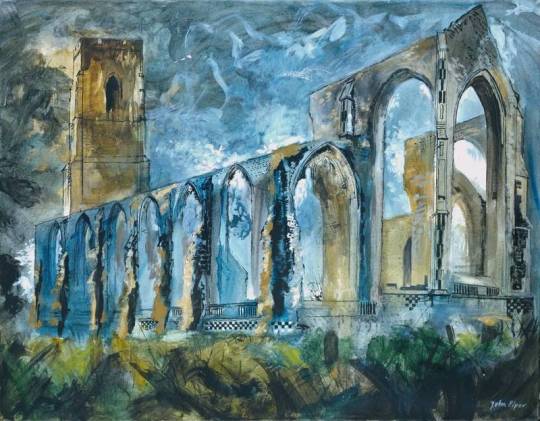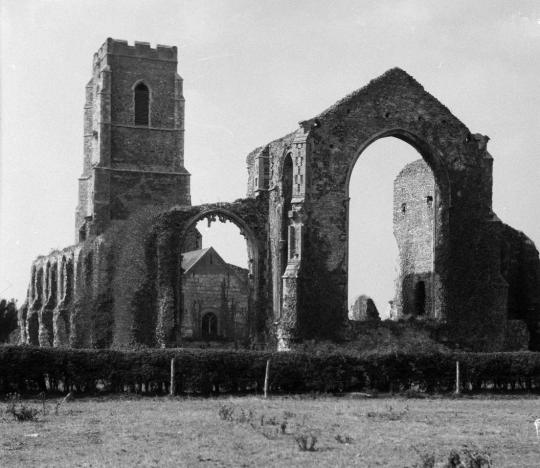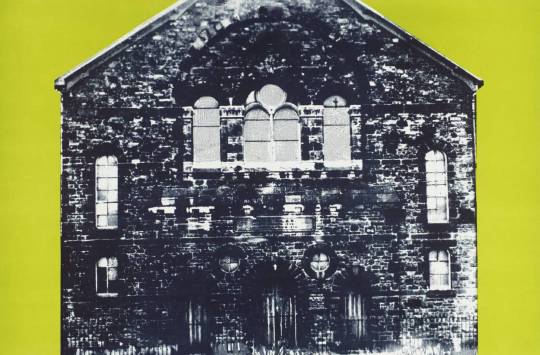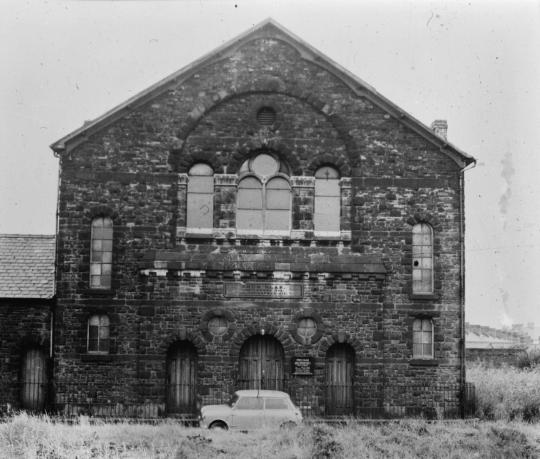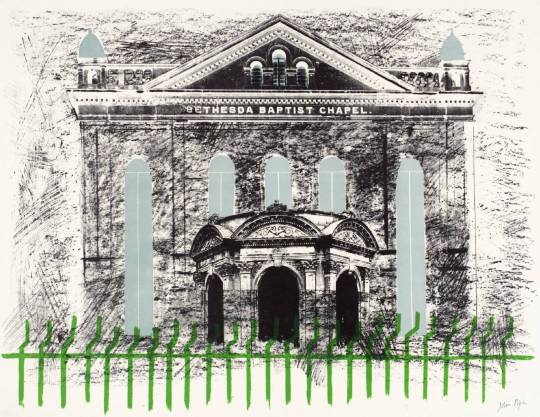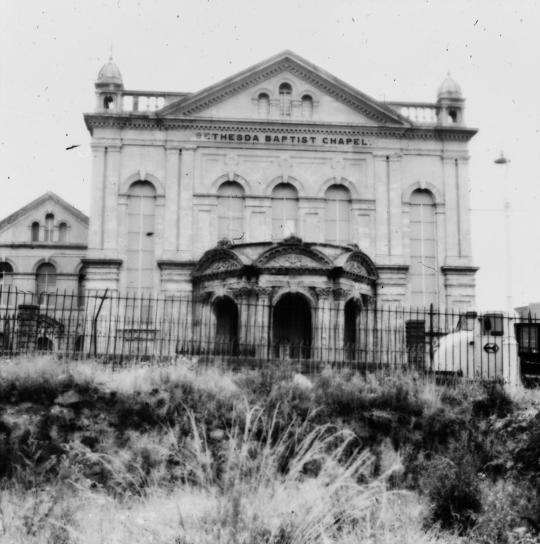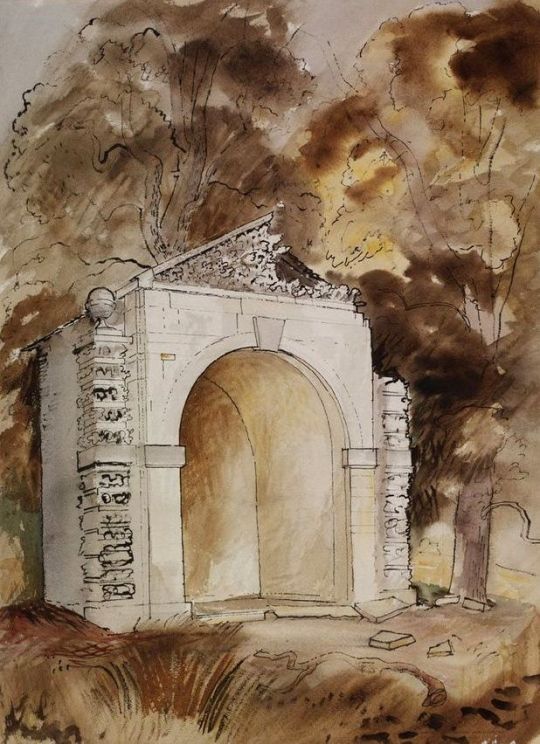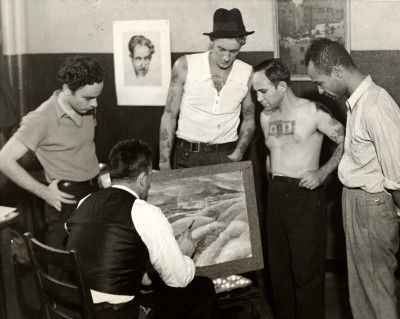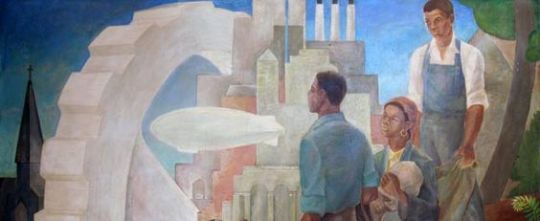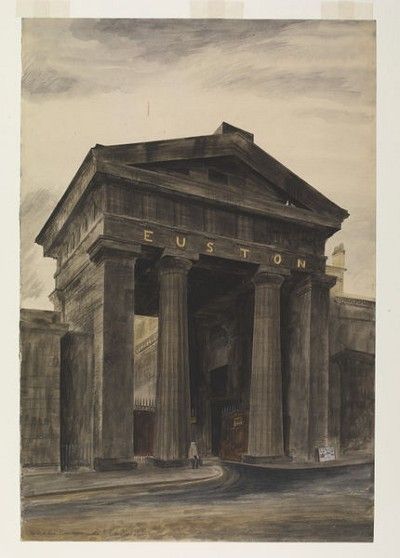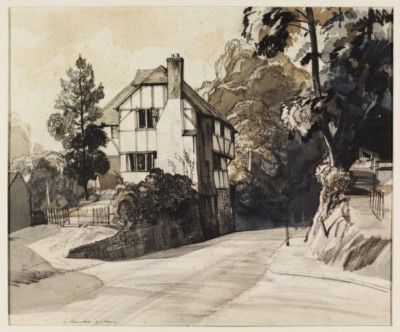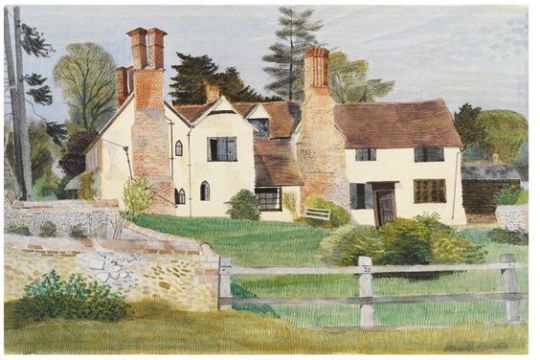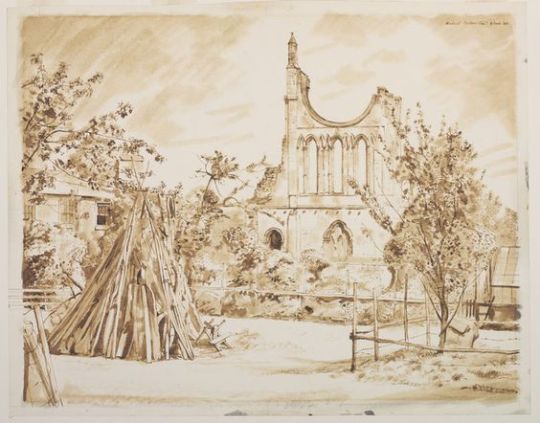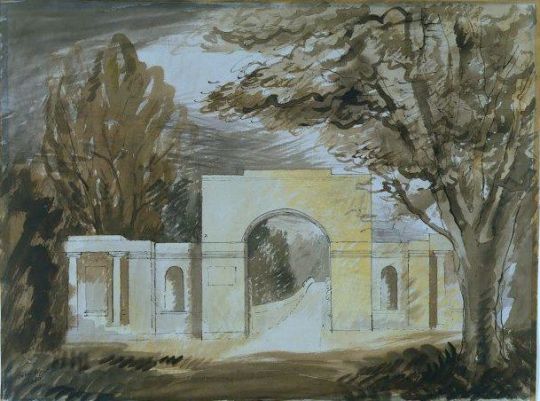In her single most important act of patronage, Queen Elizabeth commissioned a series of watercolour views of Windsor Castle from John Piper during the Second World War. They were intended to serve as a record of the Castle in case it was damaged by enemy bombs. The result was a virtuoso performance of topographical draughtsmanship. The dark storm clouds in these watercolours are a dramatic backdrop to the pale grey stone of the Castle and they also give a powerful sense of threat from the skies. Piper sought out dramatic vistas in the Castle, such as the view of the Round Tower sketched from the roof of St George’s Chapel, down the sharp perspective of the Albert Memorial Chapel roof. †
Kenneth Clark, then Director of the National Gallery had already started up the Recording Britain scheme in 1939 and it became a reality in 1940. The idea was to both keep artists in work during war-time but use them to record Britain at that moment. Artists would be given funds to go out and paint scenes they thought relevant and under threat. It was the fear that not only German forces and bombs might change the country but also the vast mechanisation of the 1930s would mean that even things like mills and windmills could be seen as endangered. John Piper was also working for Recording Britain when the Windsor commission came in.
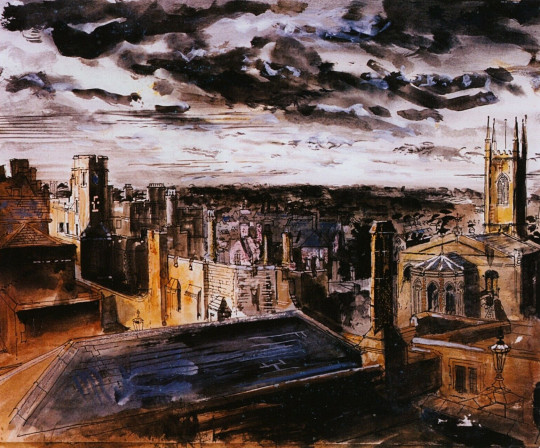
John Piper – Windsor Town from the Castle, 1940-1941
It was due to the bombing and blitz of London that John Piper was invited to paint views of Windsor Castle in late 1940. Queen Elizabeth (the Queen Mother) was worried part of the castle might be destroyed by the German bombing and thought it would be good to have some modern views painted of the grounds. In George III’s reign Paul Sandby painted many views of the Castle that are now in the Royal Collection.
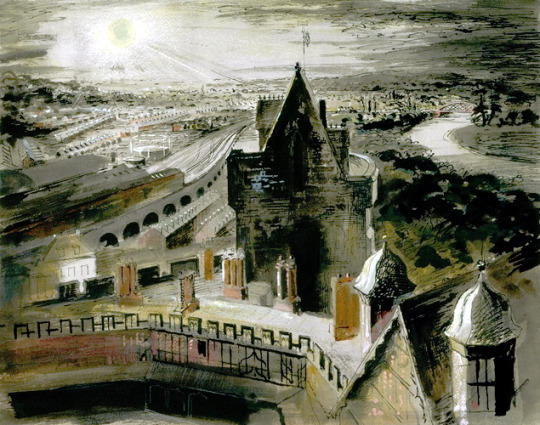
John Piper – Windsor Town, Railway, Curfew Tower and Horseshoe Cloister, 1940-1941
Kenneth Clark’s opinion was sought (he was the surveyor of the King’s pictures) on who might be a good artist to take on the task and John Piper’s name came up. Some of Piper’s work from the Recording Britain was on show at the National Gallery in late 1940 as the moving of the permanent collection of pictures had begun and many of the galleries were empty, so they were filled with the art from war artists and the recording Britain exhibitions.
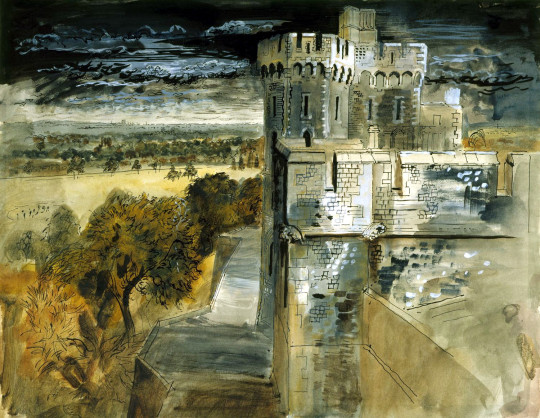
John Piper – The North Terrace and Brunswick Tower, 1940-1941
Piper spent many months drawing and painting views from sketches he had made and when he presented the works they were not met with favour. The first set of works are detailed and have a marvellous observation to them but the colours chosen are muted under gloomy skies.
The queen extended the commission and asked Piper to paint some springtime views. Clark wrote to the Queen:
“I have told Piper he must try a spring day and conquer his passion for putting grey architecture against black skies” ‡
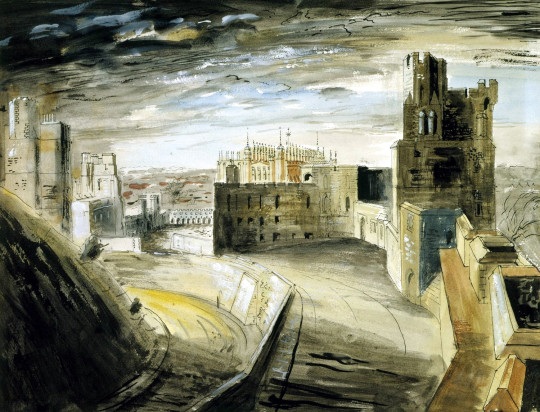
John Piper – The Middle Ward, 1940-1941
But it sounds like John Piper ignored the advice or thought it might ruin the series of works if some suddenly became bright. When the second commission was complete his style had not changed and the sky was still dark. This might have been why the Queen was disappointed with the work and what made the King speak out in such a famous way.
When the Queen saw them she made some appreciative comments, but King George VI looked at them in silence for some time before remarking, ‘You seem to have had very bad luck with your weather, Mr Piper’ †
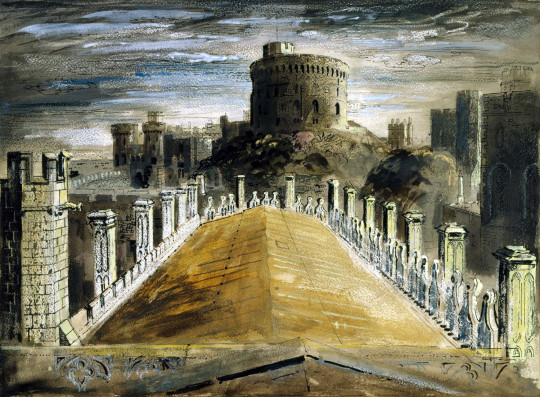
John Piper – The Round Tower from the roof of St George’s Chapel, 1940-1941
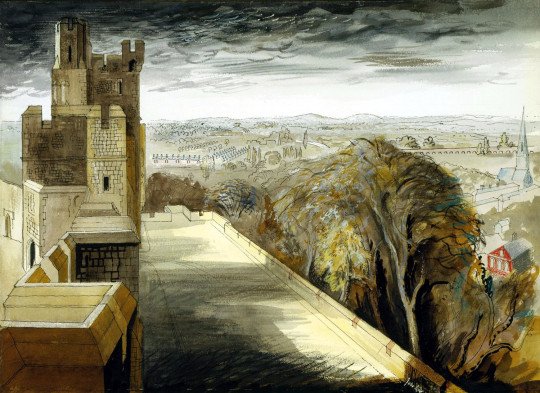
John Piper – The North Terrace and Winchester Tower, 1940-1941
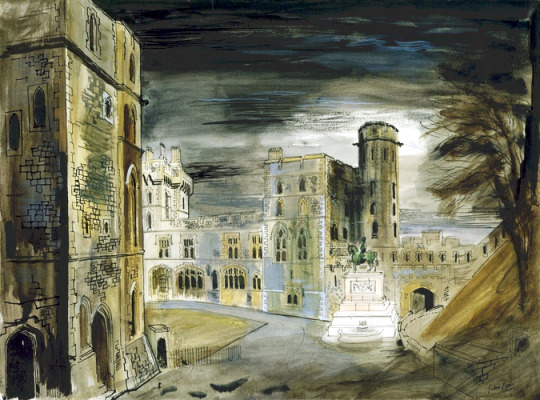
John Piper – The Quadrangle from Engine Court, 1940-1941
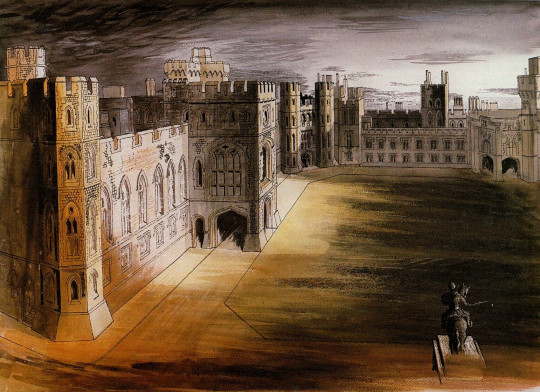
John Piper – Windsor Castle Courtyard from the Round Tower, 1940-1941
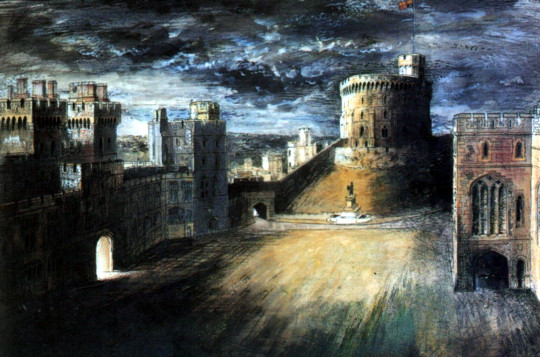
John Piper – Windsor Castle Courtyard and the Round Tower, 1940-1941
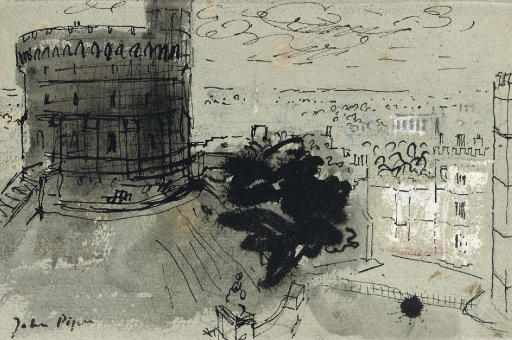
John Piper – Windsor Castle, Study of The Round Tower, 1940-1941
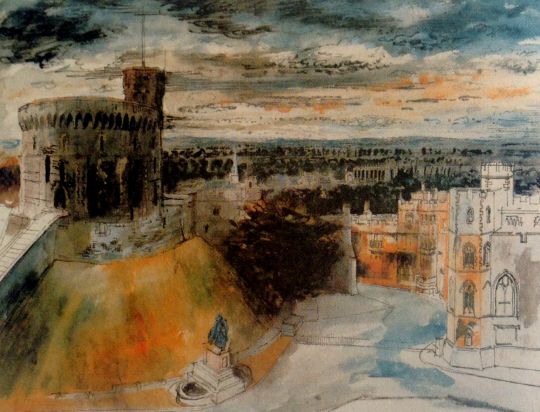
John Piper – Windsor Castle, The Round Tower, 1940-1941
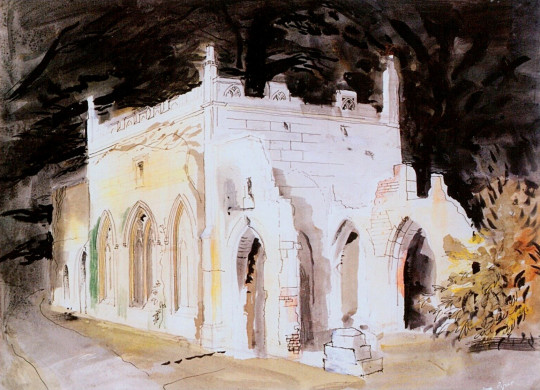
John Piper – Gothic Ruin, 1940-1941
The painting of the Royal Adelaide is not part of the commision but likely where Piper stayed at the time. Being interested in architecture and abstraction it is a perfect subject for him.
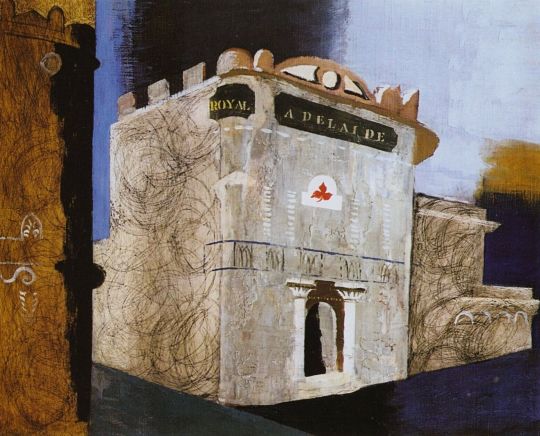
John Piper – Royal Adelaide: A Simonds House, Windsor, 1940
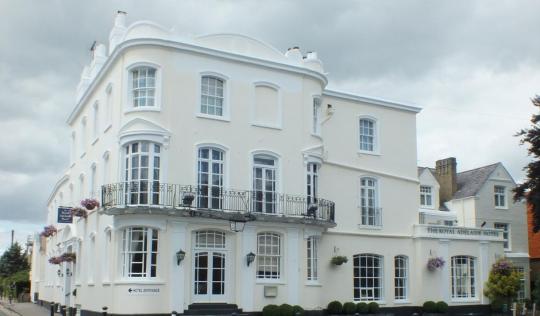
The Royal Adelaide Hotel today
Below is one of the Penguin Prints. It was a scheme that ran from 1948 – 1952 when the lack of demand killed it off. They were rather dubious quality lithographs of famous works selected by Kenneth Clark. Piper’s was the third in the series.
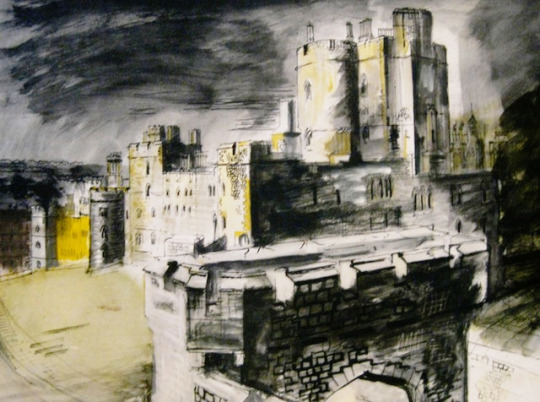
John Piper – Windsor Castle, Penguin Print #3, 1948
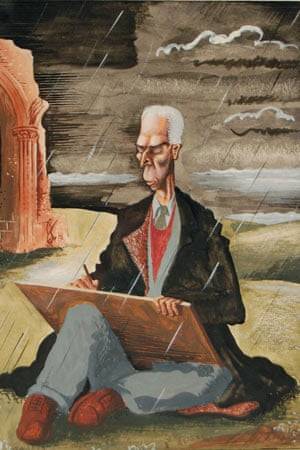
Osbert Lancaster – Mr Piper Enjoying his usual luck with the weather
† Richard Harries – The Image of Christ in Modern Art, 2013
‡ William Shawcross – Queen Elizabeth the Queen Mother, 2009
